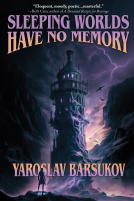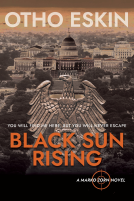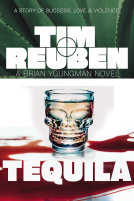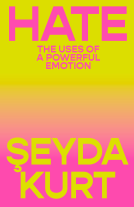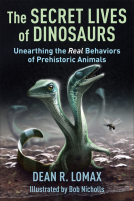
Do Elephants Have Knees?
And Other Stories of Darwinian Origins
by Charles R. Ault, Jr.
This title was previously available on NetGalley and is now archived.
Send NetGalley books directly to your Kindle or Kindle app
1
To read on a Kindle or Kindle app, please add kindle@netgalley.com as an approved email address to receive files in your Amazon account. Click here for step-by-step instructions.
2
Also find your Kindle email address within your Amazon account, and enter it here.
Pub Date Aug 15 2016 | Archive Date Sep 06 2016
Cornell University Press | Comstock Publishing Associates
Description
Thinking whimsically makes serious science accessible. That's a message that should be taken to heart by all readers who want to learn about evolution. Do Elephants Have Knees? invites readers into serious appreciation of Darwinian histories by deploying the playful thinking found in children's books. Charles R. Ault Jr. weds children's literature to recent research in paleontology and evolutionary biology. Inquiring into the origin of origins stories, Ault presents three portraits of Charles Darwin—curious child, twentysomething adventurer, and elderly worm scientist. Essays focusing on the origins of tetrapods, elephants, whales, and birds explain fundamental Darwinian concepts (natural selection, for example) with examples of fossil history and comparative anatomy.The imagery of the children’s story offers a way to remember and recreate scientific discoveries. By juxtaposing Darwin’s science with tales for children, Do Elephants Have Knees? underscores the importance of whimsical storytelling to the accomplishment of serious thinking. Charles Darwin mused about duck beaks and swimming bears as he imagined a pathway for the origin of baleen. A "bearduck" chimera may be a stretch, but the science linking not just cows but also whales to moose through shared ancestry has great merit. Teaching about shared ancestry may begin with attention to Bernard Wiseman’s Morris the Moose. Morris believes that cows and deer are fine examples of moose because they all have four legs and things on their heads. No whale antlers are known, but fossils of four-legged whales are. By calling attention to surprising and serendipitous echoes between children’s stories and challenging science, Ault demonstrates how playful thinking opens the doors to an understanding of evolutionary thought.
A Note From the Publisher
Charles R. Ault Jr. is Professor Emeritus at the Lewis & Clark Graduate School of Education and Counseling.
Advance Praise
Available Editions
| EDITION | Other Format |
| ISBN | 9781501704673 |
| PRICE | $27.95 (USD) |
Links
Average rating from 11 members
Featured Reviews
A different approach discussing evolution
This book, by Charles R. Ault Jr., takes a different approach to discussing evolution. The first three chapters are about Charles Darwin and his voyage on the Beagle and explain what led Darwin to developing the theory of evolution by natural selection. The remainder of the book discusses specific areas about evolution, for example, the evolution of whales, elephants and birds. And he does this by framing the discussion around quotes from literature, for example, “Diary of a Worm”, “Fish is Fish”, and “The White Seal”. So Ault’s approach is lighter-hearted than other books on evolution and that is also reflected in his writing style that is conversational. I enjoyed this book and recommend it for anyone interested in evolution. Even though the book might not cover new ground, it covers the ground in a unique fashion.
Readers who liked this book also liked:
Otho Eskin
General Fiction (Adult), Mystery & Thrillers, Politics & Current Affairs
Dean R. Lomax; Robert Nicholls
Nonfiction (Adult), Outdoors & Nature, Science
